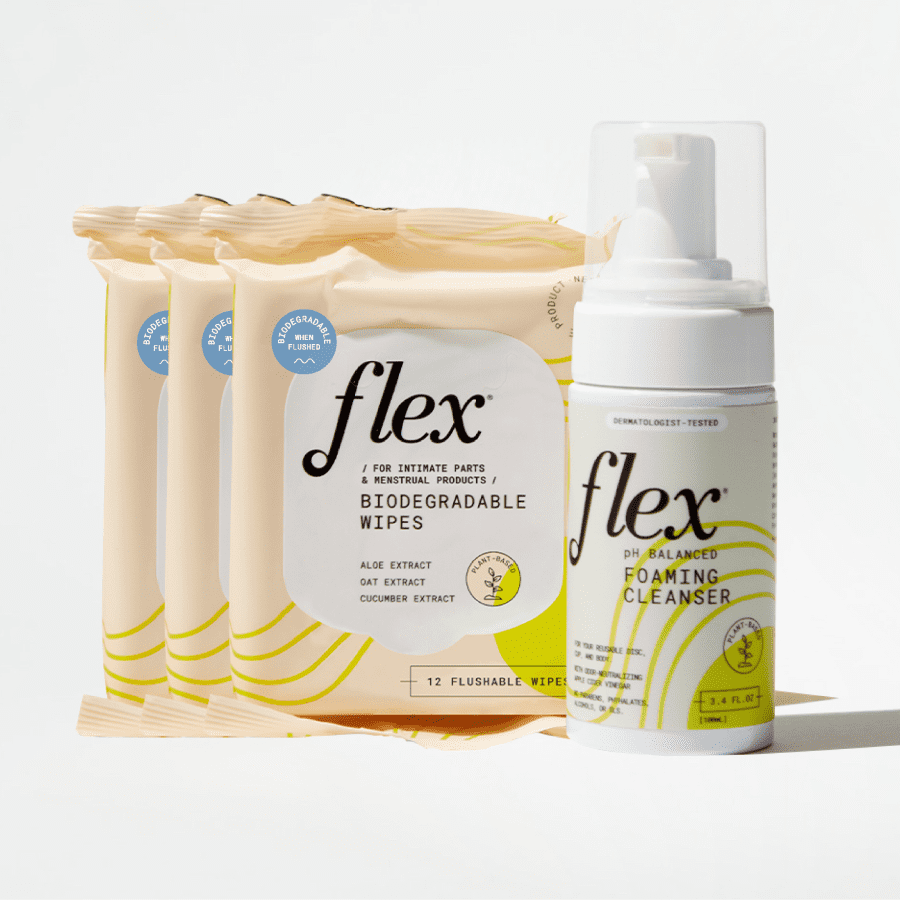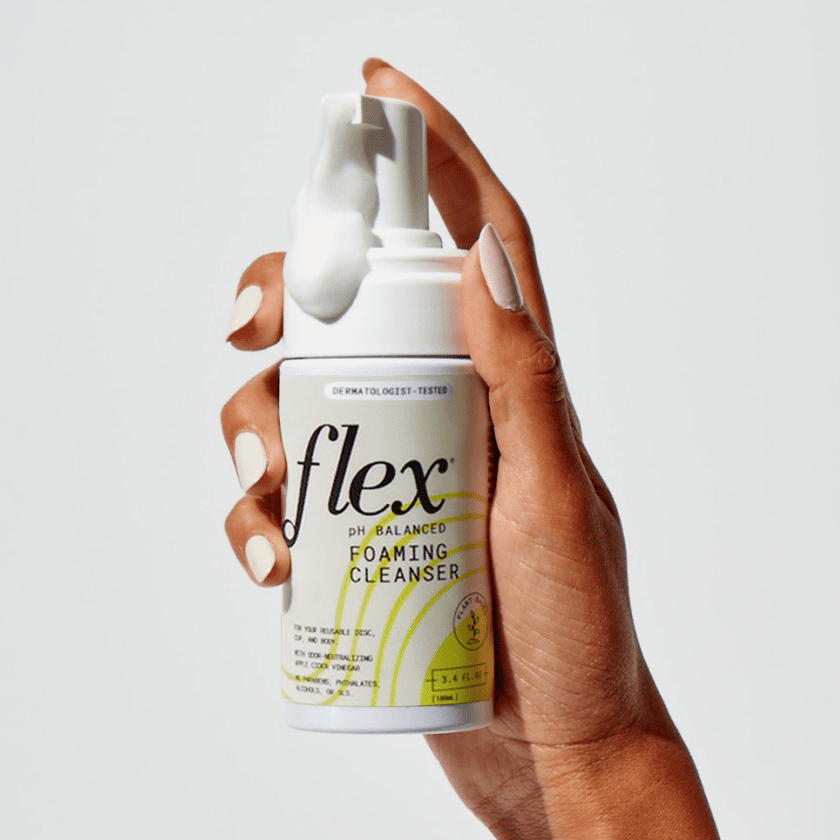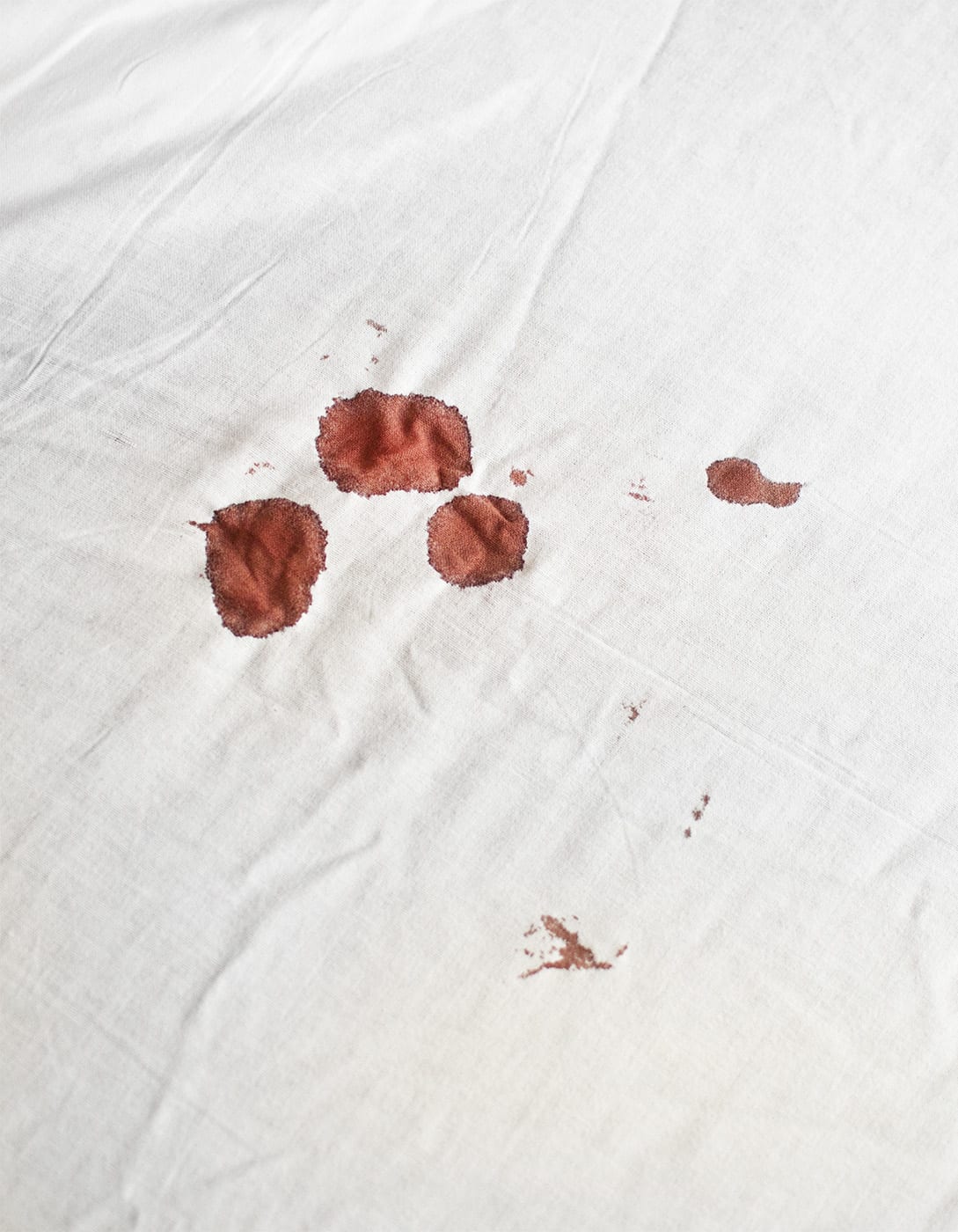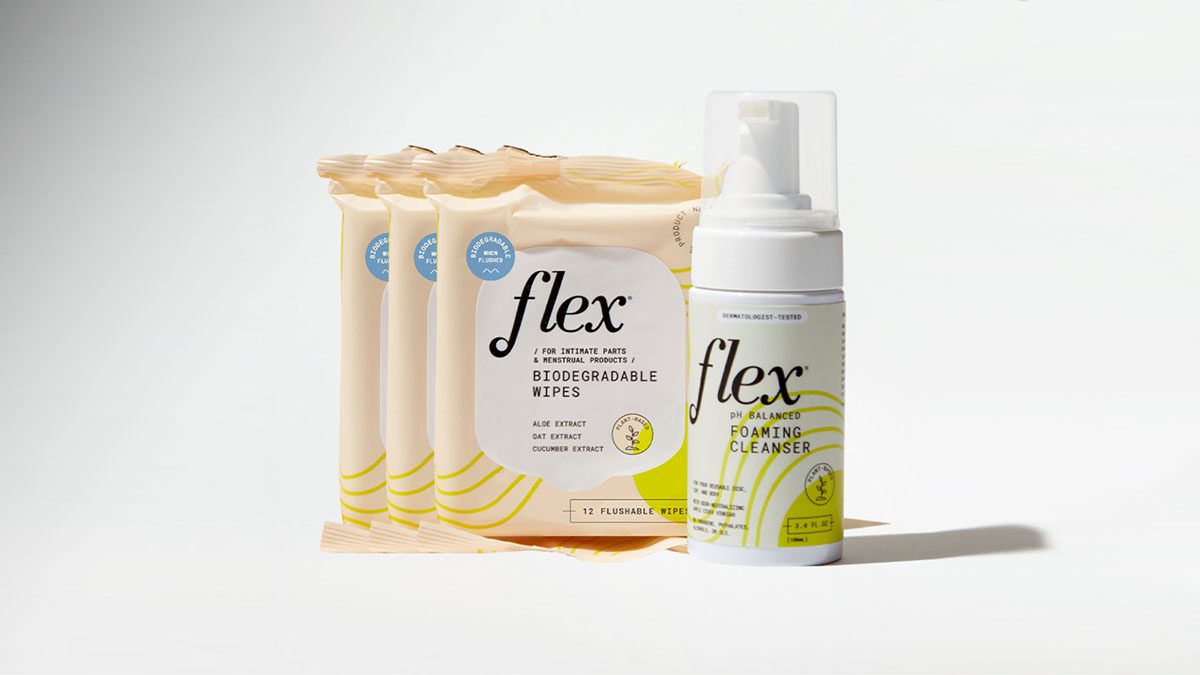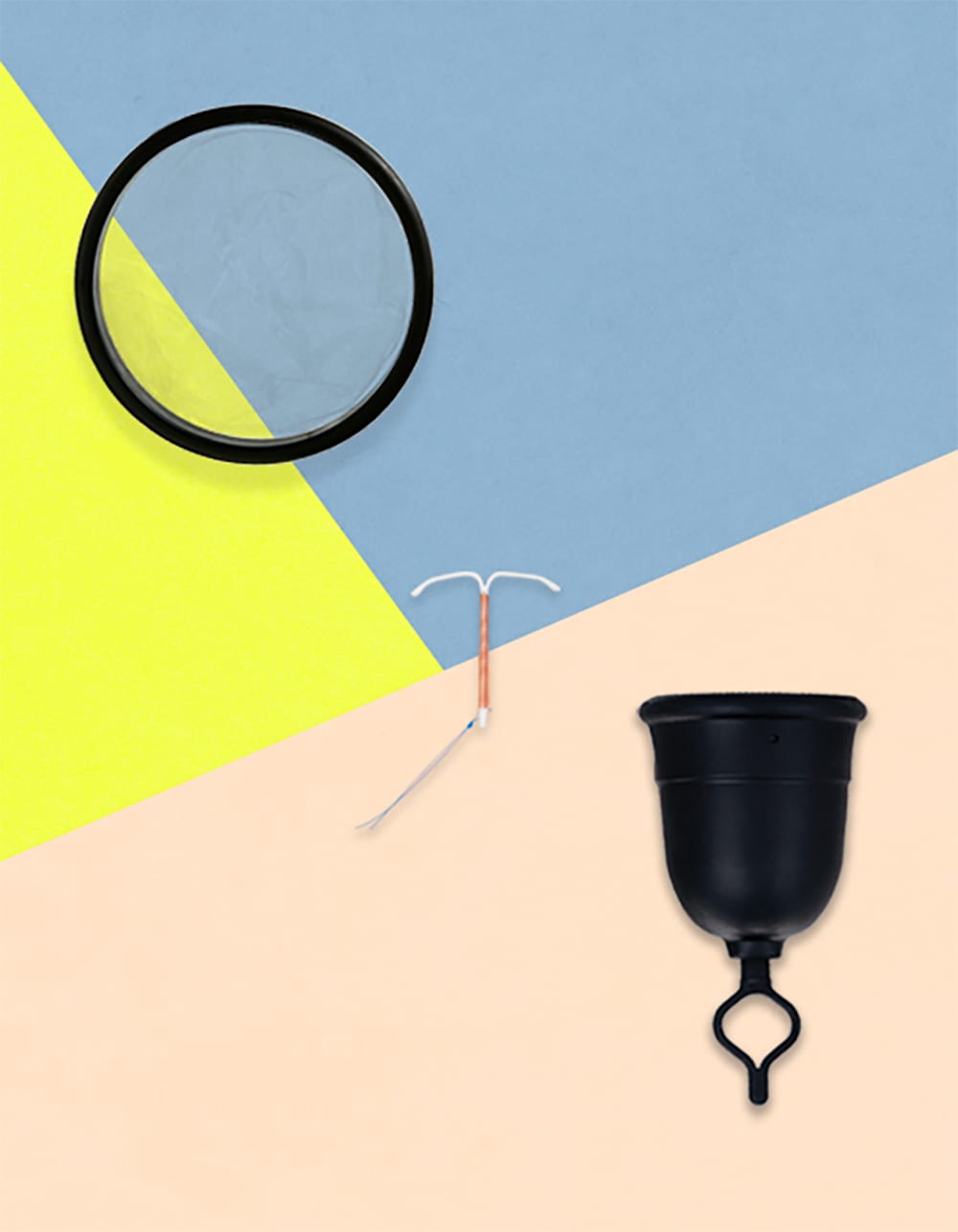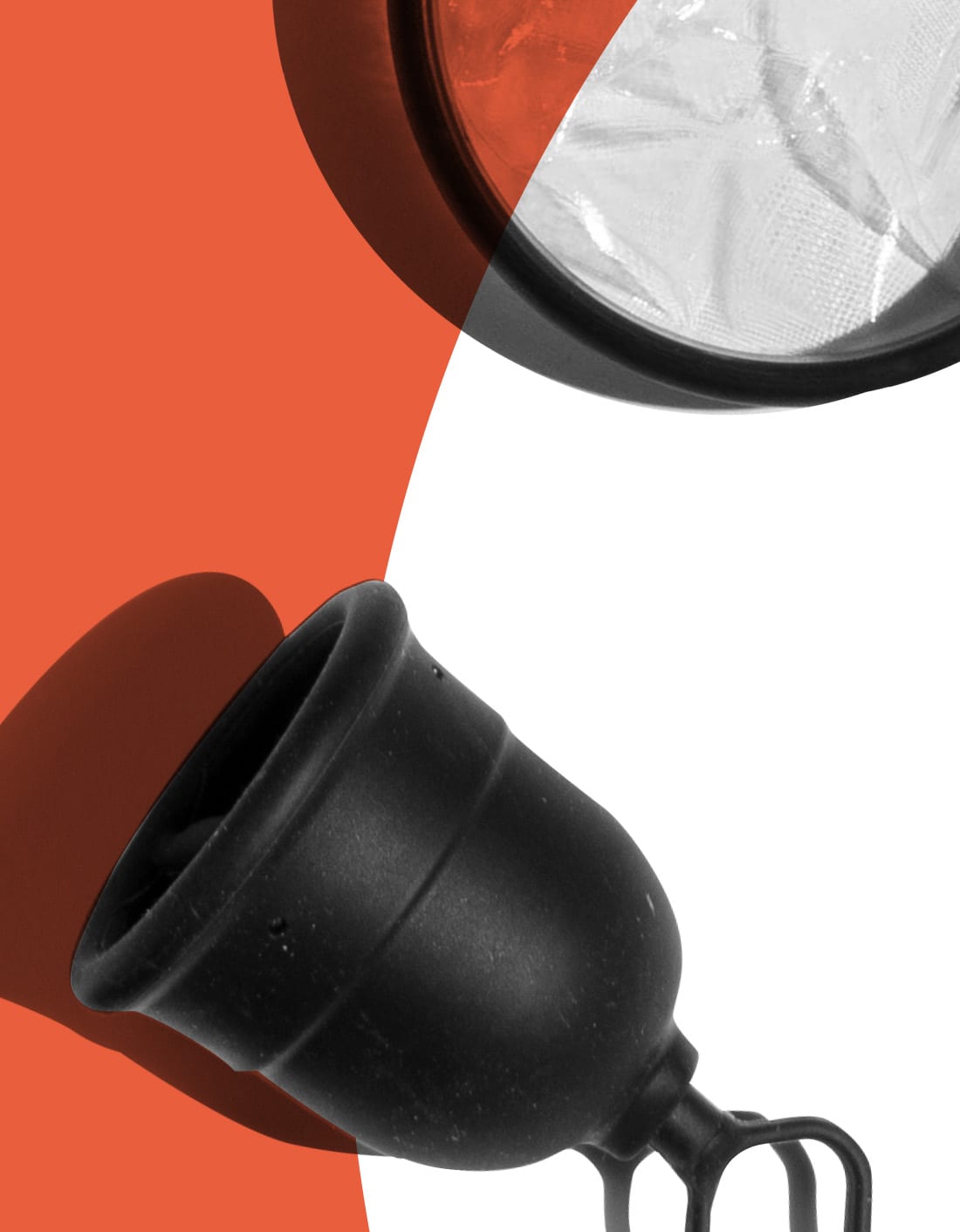How to clean your menstrual cup the right way
IN THIS ARTICLE
Why it’s so important to clean & disinfect your menstrual cup
Keeping your menstrual cup clean is essential to both your vaginal health and the longevity of your cup. No matter which brand you choose, the basic guidelines are pretty much the same: You should clean your cup at least every 12 hours during your period (whenever you empty and reinsert it), and you should sterilize it at the end of each period (at least once per month).
Why? It’s for pretty much the same reasons we wash our underwear, sex toys, or anything else that goes in our around the vulva and vagina. With an unclean or improperly cleaned menstrual cup, bacteria may cause local infections (i.e. bacterial vaginosis) or travel up the vagina and enter the cervix or uterine cavity.1
Untreated bacterial infections can have serious long-term complications, including pelvic inflammatory disease (PID) – an infection that impacts the uterus and fallopian tubes and can lead to hospitalization for antibiotic therapy and, even, infertility.2 If you manage to avoid infection, leftover bacteria on your menstrual cup has another side effect: odor and, often, excessive vaginal discharge. Not the pleasant kind, either.
In addition, remember that menstrual cups are not risk-free when it comes to Toxic Shock Syndrome. TSS is a rare but severe disease that occurs when Staphylococcus aureus bacteria colonize the vaginal canal and release dangerous toxins. It’s most commonly associated with tampon use, but a handful of cases have been reported in menstrual cup users.3 4
To minimize your risk for TSS, don’t leave your menstrual cup in for longer than recommended by the manufacturer, empty it when it gets full, wash your hands before insertion and removal, and thoroughly clean and/or sterilize your cup in between uses.3 If you use Flex Cup™, make sure to remove, empty, and clean it at least every 12 hours.
Some users may prefer to keep two cups on hand, cleaning and boiling each one after removal and alternating between the two so that they always have a sterilized back-up on hand. Choosing to do so, of course, comes down to your own personal preference and comfort level.

For menstrual cups that come in bright or light colors, stains can become an issue. To get rid of stains, some users suggest soaking the cup in a water and hydrogen peroxide solution. If you are using a Flex Cup, this isn’t something you have to worry about.
In order to help your cup live its best, odor-free life for as long as possible, here are our cleaning and sterilizing pro tips from the Flexperts:
How to clean your menstrual cup during your period
One of the great benefits of using a menstrual cup is its longevity. It’s reusable – and therefore better for the planet, your wallet, and your conscience. But there’s a catch: If you don’t clean and properly maintain your cup, its materials will break down more quickly, it’ll start to smell, it’ll be more likely to leak, and you’ll probably end up tossing it in the trash and buying a new one. It kind of defeats the purpose, right?!
We’re here to put an end to that cycle and ensure your menstrual cup thrives for the duration of its lifespan. So, for starters, here’s how to clean your cup during your period, in between changes:
Note: The instructions below apply to most silicone menstrual cup brands. However, always refer to the cup manufacturer’s instructions for more detail.
At home with Flex Foaming Cleanser
NEW Flex Foaming Cleanser was specially designed to keep your menstrual cup clean without harming its medical-grade silicone. This means your cup will last a long time and you can rest assured that no bacteria or buildup will interfere with your vaginal microbiome. Cheers to healthy, happy vaginas!
- Wash your hands first, then carefully remove your menstrual cup and dump its contents in the toilet.
- Rinse your cup with cold water (if using Flex Cup, unthread the pull-tab first).
- Wash your cup in warm water with a few generous pumps of Flex Foaming Cleanser.
- Thoroughly clean the cup, especially the air holes at the top.
- Rinse well with warm water.
- If using Flex Cup, rethread the pull tab by guiding the looped end through the hole in the bottom of the cup. Grip the ring from below the cup and pull until the entire ring has come through. You can then adjust the length of the pull tab as needed. Pro-tip: Re-threading is easier while the cup is still wet.
- Reinsert! Or, if you’re putting your cup away for a little while, make sure it’s dry before storing it in its pouch.

On the go with Flex Biodegradable Wipes
If you’re traveling, at work all day, or in a situation that demands you empty and reinsert your cup in a public bathroom, fear not! NEW Flex Wipes are the perfect travel companion whether or not you’re on your period. Use them to discreetly clean your cup in the toilet stall (no awkward trips to the communal sinks) and on your labia, fingers, or any other body parts that could use freshening up.
P.S. Missed our last blog post? Learn more about the many uses for Flex Wipes here.
If you don’t have access to a sink:
- Clean your hands with a wipe, then carefully remove your menstrual cup and dump its contents in the toilet.
- Grab a Flex Wipe and carefully wipe down all surfaces of the cup.
- Dispose of the wipe and, if needed, grab a fresh one to thoroughly clean any remaining fluid or menstrual blood from your cup.
- Allow your cup to air dry before reinserting.
- Use an additional Flex Wipe, if needed, to freshen up your vulva, fingers, or anywhere else!
If you do have access to a sink:
- Wash your hands and remove your menstrual cup and dump its contents in the toilet.
- Rinse your silicone menstrual cup with cold water (if using Flex Cup™, unthread the pull-tab first).
- Grab a Flex Wipe and carefully wipe down all surfaces of the cup.
- Rinse your cup again.
- Reinsert!
At home with whatever you have on hand
If you need to clean your cup ASAP and haven’t yet purchased a specially-designed menstrual cup wash, no worries: You might already have the right supplies on hand. Here’s the step-by-step process:
- Wash your hands, remove your menstrual cup and dump its contents in the toilet.
- Cleaning your Flex Cup? First, you’ll want to unthread the pull tab in order to clean it thoroughly.
- Wash your cup with warm water and mild, oil- and fragrance-free soap. A few brands we like include Dr. Bronner’s Pure-Castile Liquid Soap, Cetaphil Gentle Skin Cleanser, and Liquid Neutrogena Fragrance-Free Cleanser. Avoid using fragranced dish soaps or hand soap – these can degrade your cup’s silicone over time.
- Rethread the pull tab by guiding the looped end through the hole in the bottom of the cup. Grip the ring from below the cup and pull until the entire ring has come through. You can then adjust the length of the pull tab as needed. Pro-tip: Re-threading is easier while the cup is still wet.
- Make sure the cup is 100% dry, then either reinsert or store your cup in its pouch until you need it again.
How to sterilize your menstrual cup each month
After your period is over and you’re done using your menstrual cup for the month, boiling your menstrual cup in water for 10 to 20 minutes is recommended to sterilize it (using regular tap water is totally fine). You can boil water on the stove or in the microwave. We recommend the stovetop, since you’ll be able to keep the water at the correct temperature for the duration of the sterilization process.
Forgot to sanitize your cup last month and desperately need to use it? It’s totally fine to do so as long as it has been washed according to the steps above (either with a mild soap or a specialized menstrual cup wash). However, to make sure your cup is completely free of harmful bacteria and lasts as long as possible, try to remember to sterilize it at least once per month.
Stovetop menstrual cup sterilization:
- Fill a small pot with 4 cups of water and bring to a boil.
- Place your (cleaned) menstrual cup in the pot of boiling water and, if needed, reduce the temperature slightly so that the water doesn’t boil over.
- Set a timer for 10-20 minutes and keep an eye on the pot to make sure it continues to boil.
- After the timer goes off, use tongs to carefully remove the cup from the pot of water and place it on a paper towel to cool off. Wait until your cup is completely cool and dry before putting it back in its pouch to store until next time.
Microwave menstrual cup sterilization:
- Fill a microwave-safe container (ideally a glass dish, like a Pyrex dish, or a large mug) about three-quarters full with water.
- Place the dish or mug in the microwave for about 3 minutes, or however long it takes for the water to reach a rolling boil.
- Use a towel or oven mitts to carefully remove the dish from the microwave, and then immediately place your menstrual cup in the still-boiling water.
- Let your menstrual cup sit in the water for 10 minutes, then strain or remove with tongs.
- If desired, repeat steps 1 through 4 with a fresh batch of water.
- Wait until your cup is completely cool and dry before putting it back in its pouch to store until next time.
Note: Do not place your menstrual cup itself into the microwave! Doing so could damage the cup’s materials. Only use the microwave to boil the water.
Key takeaways
Cleaning your menstrual cup is important – it’s not as simple as rinsing it under warm water (although that’s a good first step). To completely remove buildup and bacteria, you can also sterilize your cup once a month. To do so, boil your cup in water for 10 to 20 minutes. During your period, in between uses, clean your cup thoroughly with warm water and mild soap.
Want to make cleaning your cup (and staying fresh during your period) even easier? Check out Flex Foaming Cleanser and Flex Wipes, two new products that we spent years developing so that our customers can have safer, more comfortable periods. We hope you love them as much as we do.
Have questions about using Flex Cup or Flex Discs™? Chat with one of our friendly Flexperts! Email us at help@flexfits.com.
This article is informational only and is not offered as medical advice, nor does it substitute for a consultation with your physician. If you have any gynecological/medical concerns or conditions, please consult your physician.
© 2021 The Flex Company. All Rights Reserved.
- Kakani, C. R., & Bhatt, J. K. (2017). Study of adaptability and efficacy of menstrual cup in managing menstrual health and hygiene. International Journal of Reproduction, Contraception, Obstetrics and Gynecology, 6(7), 3045. https://doi.org/10.18203/2320-1770.ijrcog20172932[↩]
- Mayo Clinic. (2020, April 23). Pelvic inflammatory disease (PID) – Symptoms and causes. https://www.mayoclinic.org/diseases-conditions/pelvic-inflammatory-disease/symptoms-causes/syc-20352594[↩]
- Nonfoux L, Chiaruzzi M, Badiou C, Baude J, Tristan A, Thioulouse J, Muller D, Prigent-Combaret C, Lina G. (2018). Impact of currently marketed tampons and menstrual cups on Staphylococcus aureus growth and toxic shock syndrome toxin 1 production in vitro. Applied Environmental Microbiology, 84:e00351-18. https://doi.org/10.1128/AEM.00351-18.[↩][↩]
- Mitchell, M. A., Bisch, S., Arntfield, S., & Hosseini-Moghaddam, S. M. (2015). A confirmed case of toxic shock syndrome associated with the use of a menstrual cup. The Canadian Journal of Infectious Diseases & Medical Microbiology, 26(4), 218–220. https://doi.org/10.1155/2015/560959[↩]

